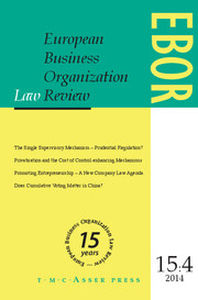Article contents
The IMS Health Ruling: Some Thoughts on its Significance for Legal Practice and its Consequences for Future Cases such as Microsoft
Published online by Cambridge University Press: 13 October 2005
Abstract
In its ruling in IMS Health, the European Court of Justice formulates four cumulative conditions to test whether there has been abuse of a dominant position within the meaning of Article 82 EC in the case of a refusal to license an intellectual property right (IPR). The Community courts only find an abuse of dominance in cases of non-licensing of an IPR in ‘exceptional circumstances’. The four conditions are an elaboration of this main criterion, and they revolve around the elements of ‘indispensability’, ‘new product’, ‘exclusion of all competition’ and ‘objective grounds for a licence refusal’.
However, the judgment leaves several questions unanswered, such as on the requirement of the introduction of a new product and on the issue whether the conditions stipulated are (equally) applicable in all competition cases in which IPRs play a central role. In the Microsoft case, currently pending before the Court of First Instance, the Community judicature will have to deal with these questions once more.
One of the situations in which a different interpretation might pertain to the main criterion of ‘exceptional circumstances’, an interpretation that tends more towards a general ‘essential facilities’ approach combined with elements of the ‘leverage theory’, concerns the field of information technology and software development. This scenario involves cases in which a software producer is asked to release certain information to enable other software products to connect with its operating system. The question is whether a small part of an innovation protected by intellectual property law should be disclosed to a competitor. With such information, it would be possible for that competitor to market his own software product. It is important, of course, that the information provided should not represent an essential part of the core activity or functionality of the licensee's product.
Keywords
Information
- Type
- Case Note
- Information
- European Business Organization Law Review (EBOR) , Volume 6 , Issue 3 , September 2005 , pp. 467 - 495
- Copyright
- 2005 T.M.C. Asser Press
- 1
- Cited by

